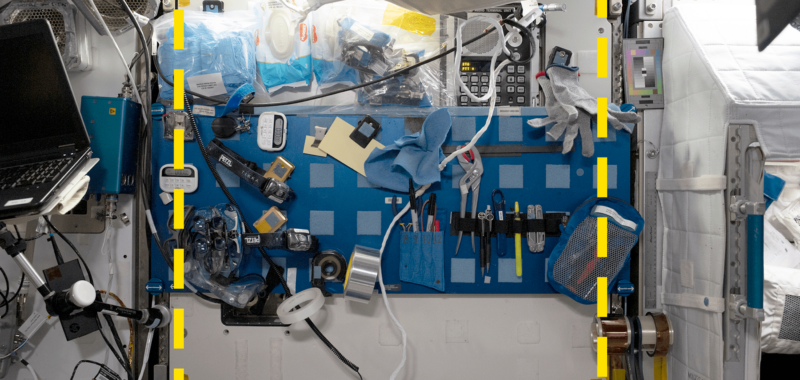Archeology practice throughout history has always centered on terrestrial sites. That’s changing as humanity continues its push into space. And after over two decades and more than 270 inhabitants, the International Space Station has provided researchers with the very first area to examine using archeological approaches.
In a study published August 7 in the journal PLOS ONE, a team at California’s Chapman University applied a traditional field strategy known as a shovel test pit to analyze how the ever-changing “microsociety” aboard the ISS has adapted and shifted over time. On Earth, these projects involve digging small excavations at regular intervals across a site to gather information on how artifacts are distributed, then pick particularly promising pits for more thorough study. Since there’s not anything to “dig” on the ISS, however, the team selected six locations throughout the space station and tasked astronauts to take daily photos of each space over roughly two months in 2022.

The researchers paper focuses on findings from the first two fully documented sample locations—a square site officially designated for equipment maintenance and another located near the station’s exercise equipment and latrine. Using a novel, open-source image analysis program developed by the team, researchers identified 5,438 examples of “artifacts” utilized for various needs. Among these were an augmented reality headset, Post-It notes, gloves, tools, and writing tools like Sharpie pens. Once meticulously listed, the team then compared the daily photos with ISS astronaut activity reports to see how the actual use of these spaces stacked up to their supposedly official designations
“Some general characteristics are revealed by archaeological analysis of a space station’s material culture,” researchers write in their paper’s conclusion. “First, even in a small, enclosed site, occupied by only a few people over a relatively short sample period, we can observe divergent patterns for different locations and activity phases. Second, while distinct functions are apparent for these two squares, they are not the functions we expected prior to this research.”

Much like on Earth, researchers found that assigned spaces don’t always maintain their original purpose. Although it was assigned as an equipment maintenance area, astronauts mostly used this space for miscellaneous storage. And while the exercise and latrine spot was never defined for specific use, astronauts consistently turned it into a makeshift closet for resealable bags, various toiletries, and even a rarely used computer.
“We were a pretty organized crew who was also pretty much on the same page about how to do things,” one unnamed astronaut said during the study’s crew debriefing. “As time went on… we organized the lab and kind of got on the same page about where we put things and how we’re going to do things.”
While researchers note this shows how functionality becomes assigned to different ISS regions through “usage and mutual agreement,” they add that, “At the same time, the station is not frozen in time. Different people have divergent ideas about how and were to do things.”
[Related: Why food tastes more bland in space.]
While only an initial survey into this subject matter, it’s the first of its kind to document how humans adapt to a novel environment completely removed from what we as a species evolved to handle. The team argues that en]suring greater space usage flexibility could help improve crew autonomy and improve their overall wellbeing. They also] believe further studies using both shovel test pit and other methodologies, while created for Earth, may help planners when considering habitat designs for future, long-term missions to the moon, Mars, and beyond.
“By applying a very traditional method for sampling a site to a completely new kind of archaeological context, we show how the ISS crew uses different areas of the space station in ways that diverge from designs and mission plans,” researchers said in an accompanying statement.

